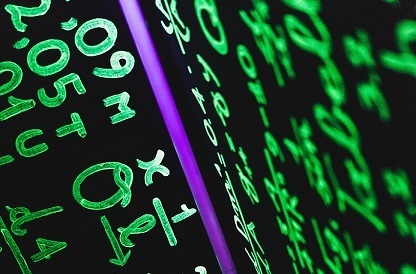- Created by Susanne Nägele-Jackson, last modified on Feb 04, 2022
Quantum technologies are expected to play a crucial role in society and will most likely have a disruptive impact in many fields, but most importantly in the areas of
- quantum computing
- quantum communication (including quantum key distribution)
- quantum simulation
- and quantum sensing.

Quantum systems and technologies control quantum effects from atoms, electrons or light-photons (quanta) and make use of their behaviour and characteristics [ELL2020], [BUN2020], [NIE2010]. Unlike in classical physics, quanta follow the laws of quantum physics and, although they are particles, they behave also as waves that can be amplified, attenuated or layered. Quanta also have the property of being able to be tied to probabilities which reflect their distributed location in time, i.e., quantum state probabilities are distributed in space at each point in time. With such properties, quanta can be used to describe highly complex problems that would have previously been impossible not only to process, but even just to describe, with classical computer systems based on simple binary digits.
Quanta can be used and coded as “Quantum bits” or “Qubits” where a qubit |Q> can assume any possible superposition of |0> and |1>, i.e. a qubit does not represent a value of ‘0’ or ‘1’, but can actually be any state and mixture of ‘0’ and ‘1’. Measurements can be used to determine the probability that a qubit is in a certain state; but unlike in classical measurements that leave a bit untouched, the measurement of a qubit is more like applying a filter or stencil that forces the qubit to assume either a state of ‘0’ or a state of ‘1’, each with a certain probability. This means that the measurement forces the qubit to change from its state of superposition and collapse to one of the two possibilities.


Quantum computers can be so much more powerful because they can make use of these probabilities of quantum mechanical superpositions instead of just relying on a binary system. A computing operation moves the qubit superposition to the next computing operation, and parallel calculations can be performed as long as the qubit is not measured and forced to collapse.
Qubits may also have a characteristic feature called entanglement, i.e. two qubits can be entangled and can influence each other over arbitrarily long distances. A certain important subgroup of entangled qubits is called Bell-pair. This also means that if the state of one qubit is known after measurement, the state of the other qubit far away, that is entangled with it, is also determined. Because of this entanglement, the transfer of information from bit to bit as performed in calculations of classical systems is no longer necessary, because all qubits can perform the calculation simultaneously. In other words, with more qubits, more states can be processed simultaneously, and the quantum system is more powerful with a state space of 2**n dimensions rather than just 2**n elements in the case of classical bits.
References:
[BUN2020] Bundesministerium fuer Bildung und Forschung, Quantentechnologien –von den Grundlagen zum Markt. Rahmenprogramm der Bundesregierung. January 2020, https://www.bmbf.de/upload_filestore/pub/Quantentechnologien.pdf
[ELL2020] Beatrice Marie Ellerhoff, Mit Quanten rechnen. Quantencomputer fuer Neugierige, Springer Spektrum, June 2020, ISSN 2197-6708 ISSN 2197-6716 (electronic), ISBN 978-3-658-31221-3ISBN 978-3-658-31222-0 (eBook), https://doi.org/10.1007/978-3-658-31222-0
[NIE2010] Michael A. Nielsen, Isaac L. Chuang, Quantum Computation and Quantum Information, Cambridge University Press, 2010, ISBN 978-1-107-00217-3, http://mmrc.amss.cas.cn/tlb/201702/W020170224608149940643.pdf
- No labels